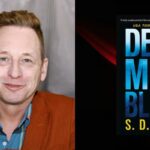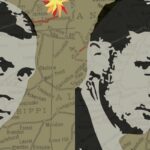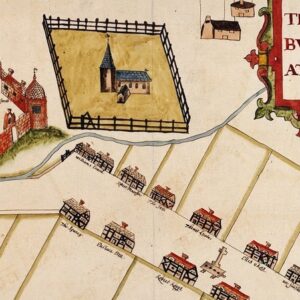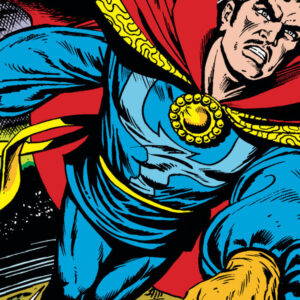
The Future of New Writing: Introducing Freeman's, Issue Four
New Writing from Valeria Luiselli, Samanta Schweblin, Édouard Louis, and More
With each passing year, it struck me as a diminishment for literary culture to peer into the future of writing but immediately restrict its keyhole to a nationality—or a genre. What happens if you take these restrictions off, and start reading across generations?
In that spirit The Future of New Writing issue of Freeman’s was born, and for the past two years, sometimes haphazardly or by luck, but with increasing direction, I have gathered names (see below), called in texts, bought and borrowed books, and read with the goal of trying to find out who were the best emerging writers.
Passing what I liked or thought I liked on to Allison Malecha, we read the work of over 100 writers, and relied upon the advice of hundreds of writers and critics, translators, bookstore owners, festival directors, publishers and academics.
I preferred this method to a jury because it would allow us to include writers who were strange or provoked strong reactions, the kinds of writers prone to rejection by consensus decisions.
Choosing the list this way also mimicked the fashion by which literature travels in general—less on an express train to a judge and jury, where it must account for itself, but hitchhiking from one fellow-traveler to another.
So here are 29 passengers we think will continue to be traveling into the future—perhaps even define it.
A Yi · Garnette Cadogan · Elaine Castillo · Marius Chivu · Mariana Enríquez · Athena Farrokhzad · Daniel Galera · Johan Harstad · Ishion Hutchinson · Tania James · Mieko Kawakami · Édouard Louis · Valeria Luiselli · Fiona McFarlane · Dinaw Mengestu · Nadifa Mohamed · Sayaka Murata · Heather O’Neill · Pola Oloixarac · Diego Enrique Osorno · Ross Raisin · Sunjeev Sahota · Samanta Schweblin · David Searcy · Solmaz Sharif · Andrés Felipe Solano · Ocean Vuong · Claire Vaye Watkins · Xu Zechen
The Future of New Writing will be launched in New York City, Thursday October 5th at the New School, 66 West 12th Street ,with Garnette Cadogan, Elaine Castillo, Valeria Luiselli and Dinaw Mengestu. Tickets are available here.
Not in New York? Catch Freeman and various contributors in Vancouver, San Francisco, Sacramento, Los Angeles, Boston, Houston, Austin, Portland (OR), Colgate University, and Vassar College.
![]()
The Future of New Writing: An Introduction
John Freeman
The first book I received as a gift was The Little Prince. My grandmother mailed me a copy for my sixth birthday, the illustrated edition with dreamy watercolors painted by the author, Antoine de Saint-Exupéry. I was not a reader back then. I rode a yellow banana bike and imagined it was a chopper. I played whiffle ball and soccer and yearned for little else than to be a starting pitcher for the Phillies. The world as I knew it began and ended with Emmaus, Pennsylvania, the town where my family lived. A giant tree loomed over our front yard, where snowdrifts built canyons in winter. On weekends, after baseball games, my brothers and I sucked down cherry slushies at Dino’s, the pizza place next door to the WaWa, where my father sometimes bought milk for 99 cents a gallon.
And then I read The Little Prince. The story of how a downed pilot encounters a bescarfed alien prince cracked my world open. Not all trees looked like the one in the front yard. There was such a thing as a baobab. There were deserts. There were princes and airplanes, and asteroids, and aliens who spoke and talked like us. Foxes who could be friends or tricksters. I was mesmerized. I read that book over and over belly down on the scratchy carpet in our front room, the hours tilting by invisibly. I have since realized that the experience of turning those pages was like taking off in an airplane. Fly often enough, you know how it works, the wings deflect air around them, creating a force pushing up and the plane has no choice but to leave the earth behind. Yet every time the ground subtracts beneath me, I hold my breath in wonder. What a thing.
Back then I didn’t for a moment consider the author who wrote The Little Prince. The book came from my grandmother; she might as well have written it. I didn’t think, I am reading a French novella, nor did I congratulate myself for exploring literature in translation. Everything, when I was that age, had to be translated. Something was an object or a person or an experience, then it became a word. Simultaneous to that reduction, the world beyond my front yard was expanding daily. My parents gave me a globe and I spun it like a basketball on my finger, unaware that Saint-Exupéry wrote his miraculous book after crashing his red and white Caudron C.630 Simuon in Egypt’s Wadian-Natrun while trying to set a speed record with his friend André Prévot for a flight from Paris to Saigon. They had gone down without a map and carried just enough liquid—a thermos of coffee and some wine (Frenchmen!)—to survive one or two days. I learned only later they were tricked by mirages, marveled at their hallucinations, and nearly died. Their lives were saved by a passing Bedouin tribesman who resuscitated them with a native rehydration method.
When I read these details in Stacy Schiff’s gorgeous biography of Saint-Exupéry a few years ago, my world split open once again. A book written about being grounded, a novel born from heartache and destruction—Nazism had chased Saint-Exupéry from France; his brother had died—brought my imagination to life several decades later in a part of America Saint-Exupéry had never seen, a town of hot rods, twirling barbershop poles, and crumbling VFW halls. This was as magical as flight. The world seen from above reveals its patterns. The way Saint-Exupéry abstracted tyranny and loss in a story about an alien had made it possible for me to understand those concepts as a child. To identify their shapes from a distance. Only I thought I was reading about friendship, and adventure.
*
We read differently as adults. The world around us and the people we have in it are long since named and labeled. With each passing year, our lives carry greater weight, some of it, oddly, acquirable only through loss. So most of us seek out different kinds of books. We have to—flight, as we also learn, is dangerous. Life is lived on the ground. Books are presented to us in a different way for this reason. Their covers look familiar enough to tell us what to expect, but mysterious enough to suggest we might not predict everything that will happen in their pages. Names of familiar authors attest to these pleasures on back jackets. If you live in the United States, most of the books you read will be written in English. If they are not, they will immediately place themselves in a tradition of other well-known writers from the author’s part of the world. How many people began reading Gabriel García Márquez because another Colombian novelist attested to his greatness? And yet that is how most books from most parts of the world are pitched to us as adult readers.
These are just some of the barriers to being a cosmopolitan reader—which I contend is our original state. I am talking, not about what the philosopher Paul Gilroy labeled jet-set cosmopolitanism, but rather about the expansive and enlarging category that Gilroy also sets out in his books, and which the writer Aminatta Forna expanded upon in a recent gathering on the topic at Georgetown. “A cosmopolitan,” she said, “is a person who has or embraces more than one way of seeing, whose perspective is not boundaried by the values of a single national culture. You can be born it, achieve it or have it thrust upon you.” Think about this—the migrant is a cosmopolitan, the refugee is a cosmopolitan, the person living in two places who can imagine their plight is as well. What a beautiful idea, especially in an age when so much ugly policy and institutionalized cruelty has been rolled out in governments across the world, especially in the United States, upon an exactly opposite belief: that some people are in essence fundamentally more valuable than others.
What we read is a political matter, an ethical issue; it has always been so, but particularly now, as governments enact violence upon people who do not fit definitional purity as citizens—and as liberal democracy itself faces existential threats at its former heart, in Europe and the United States. Make no mistake, there is a culture war raging right now with the multitudinous, with hybridity, with global culture. I am not going to argue that in this time of conflict we must read against our own national cultures, but if we rarely do, what does that say about our values? What does that say about our imaginations? How, if we reinscribe national borders with how we talk about literature, can we ever expect to live in a free and open world as well? If we cannot first imagine it, we cannot in turn imagine its actuality.
Can we push against these forces with our own reading? I contend here that we can, and that we can do it without making literature a stern task. We must merely return to the broader experience of reading, the one so many people begin with—of reading as a gateway to surprise and delight and complexity and wonder, not as an imagined map of what we already know. This issue of Freeman’s is an attempt to make it easier to do this. How many times have literary pages pointed to the future and given a list of writers from just one nationality? Or one genre? Increasingly, this seems a folly to me, not least because writers themselves do not work that way. Without Günter Grass, Salman Rushdie could not have imagined his way into the heart of Salaam Sinai’s story of Midnight’s Children, without which Junot Díaz could not have conjured Oscar Wao, the hero of his eponymous novel of life during the Trujillo years and then as an immigrant in America. Writers are by nature in favor of cultural and national miscegenation, because they write with the part of the mind we read with as children.
What you have here then is a celebration of the multitudinous in all its forms. Beauty has never had a passport. It arrives unbidden, uninvited, and thus in selecting the writers for this issue—the writers I believe represent the future of new writing—I set no age, genre, or translation restrictions upon who was eligible. I wanted the writers whose lives and careers are just beginning to take flight, the writers who I believe have yet to be recognized for the full scale of their greatness, and in whose pages the possible shines like a spark in the dark. They come from a vast array of backgrounds, but were in no way selected for these distinctions: the oldest is a 70-year-old essayist who lives in Texas, the youngest a 26-year-old French novelist.
A word on the selection. Typically, literary journals and magazines that compile such a list depend upon a distinguished panel of judges to read through a few dozen books to make their selection. I have sat on several such juries and each experience was a joy, and without those experiences at Granta magazine, I would never have been able to put together this issue of Freeman’s. Still, I believed with a bailiwick this wide it would be far more helpful to have a very large number of casual advisers. So for the past two years I have talked to dozens upon dozens of critics, translators, writers, publishers, agents, book scouts, university professors, festival organizers, activists, and booksellers, asking them who represents the future of new writing. I have read Flemish poetry and unpublished writers from throughout sub-Saharan Africa and the Middle East, and visited countries where the language barrier is severe—such as Japan— more than once on errands of exploration. It would require many more pages than I possess here to thank all of the people involved in this quest, but chief among them has been Allison Malecha, the assistant editor of Freeman’s, who has read virtually everything seriously considered alongside me, and who has often come to swifter, sharper conclusions than I ever could. I am so grateful to have had a copilot who packed the coffee, not the wine.
So who are these writers? Or more aptly, what are they? After all, a writer’s true nationality is his or her style. This is the writer’s face to the world. I was happy to discover that, if national and genre borders are stripped away, an enormous palette of tones, tics, obsessions, and syntactical variety surges through the world’s best new writers. On the one hand, there are writers of torrential muchness and dazzling architecture, like Johan Harstad, whose recent 1,000-page novel, Max, Mischa, and the Tet Offensive, is excerpted here; or Ocean Vuong, who keeps a skittering momentum bursting down the page of a new poem. In her as yet unpublished 200,000-word debut novel, America Is Not the Heart, a section of which appears here, Elaine Castillo, with the sheer propulsive power of her voice, blasts a reader into her story of a family living under a repressive regime.
It is miraculous what a voice can do on the page. Testimony, in the best writers’ hands, never has to defend its credentials as art. Édouard Louis relives the days after a horrifying violent assault when the news of that experience longed to be exploded from his lungs. Heather O’Neill pushes us fathoms deep into the life of a teenage girl whose life is unraveling around her. Pola Oloxoirac describes growing up as a beautiful young woman: the field of pressure, and the warnings constantly draped around her by mothers, aunts, and others. Mariana Enríquez’s character speaks frankly and beautifully about her obsessive love of damaged hearts in a story that will make you feel the voice of Jean Genet is alive and well in the 21st century.
Realism is not nearly so dominant a style when you look to the world for good writing. In Mieko Kawakami’s short story, a woman who recently lost her house comes up with a grim solution for how she will never have to part with it again. Sayaka Murata, who works an early morning shift every day at a convenience store to give herself time to write, describes a world in which women covet clothing made of human hair, bone, and other body parts. Sometimes the world itself refutes realism’s design. In his gorgeous riff on turning 70, David Searcy recalls how a peculiarity within the compression chamber of an aging VW bug turned the little vehicle he was driving into a rattling, unlikely supercar.
The best writers I came across in this search found a way to look at and regard the world closely from a fresh perspective. Andrés Felipe Solano moved to Korea some years ago and his journal entries of everyday activities sparkle like unsolicited satori. Diego Enrique Osorno has risked his life numerous times to cover the devastating effects of North America’s transnational dependence on drugs in Mexico. In the piece selected here, he visits a town attempting to scrub itself clean of the associations of violence by holding a festival for the world’s biggest shrimp cocktail. Samanta Schweblin is one of the globe’s best short-story writers, and in her brief, whimsical piece a family rushing across town comes up with a novel way to signal its emergency.
Adornment, I increasingly feel, is a distraction from beauty, especially in writing. In his piece about a teacher who has survived a militia raid in Uganda, Dinaw Mengestu simply allows his subject’s story to take over and speak for itself. Solmaz Sharif’s poem about disquiet is poised on the knife-edge of a single moment, where despair and revelation threaten from either side. In her brief memoir of traveling in her youth, Fiona McFarlane reminds us of the way everyday life could be a revelation, or present an opportunity for self-destruction. The facts, simply stated, sometimes have an effect all their own.
There are pure storytellers here in these pages, and it’s hard not to muse on the way big stories eventually must deal with justice. Sunjeev Sahota, whose novel The Year of Runaways might be the best published anywhere in the last five years, has contributed a short story about the way intergenerational cohabitation threatens a family marriage. In his story Xu Zechen writes of a family whose fortunes are echoed by the fate of an endlessly barking abused dog. Nadifa Mohamed conjures the life of a sailor living in Wales at the midpoint of last century, when men of his ilk prayed that a crime was not committed by someone resembling them. In Tania James’s short story, a hit-and-run car accident leaves a young man dead, and a bicycle in tatters—and no one to blame. A Yi, who worked until recently as a provincial policeman, tells the hilarious story of two detectives sent to a factory in search of the thief of a missing wheel.
On occasion here, writers allow us to see them making themselves, like an artist painting his own portrait into a large fresco. In a moving personal essay, Garnette Cadogan reveals how a childhood of step-parental abuse forced him to think of himself as a character destined for abuse or revenge. Valeria Luiselli muses with shame and revelation in an essay upon the many ways she punished female writers for insufficient authenticity while going to a graduate program staffed by men. Marius Chivu, who is primarily a poet, reveals the loss that made him a poet and muses upon how gladly he would give his gift back in a second if he could have his beloved mother with him today. Claire Vaye Watkins flinches to realize she has become the kind of person her mother never would have known in her lifetime.
Even among the writers mentioned above, who are using experience as an aperture for discovery, I was surprised to discover a startling lack of self-awareness, of self-consciousness, the digital age’s gaze into the mirror. There is, it feels, in the most beautifully expressed style, a deeper level to intimate contemplation, even within personal work, such as that of Athena Farrokhzad. It emerges in her poems as a slippage at the crux of contemplation, where the lack of a recognizable past creates a steeper cliff of doubt. In Ishion Hutchinson’s exquisitely baroque verse, the poet yokes together traditions to create footbridges over such yawning caverns within his past.
*
I went looking for my copy of The Little Prince not long ago, and I was dismayed to realize it had disappeared into my library, probably buried or, more likely, long gone in one move or another. My family was itinerant. I gave up on my search after I realized that if I thought hard I could imagine almost every single one of its panels, including the frontispiece and my grandmother’s looping script and the year of her gift. Just as I can see the page on which my mother’s hand once inscribed a copy of Dylan Thomas’s poems to me for my 17th birthday, and I also have no problem seeing the words of love on an anthology of City Lights pocket poets given to me by an old friend.
I suspect you have books like these in your house, well-preserved or tattered copies that are so old they are no longer books but hanging door frames you once walked through. I hope you can accept this collection of new writing in the same spirit—less as a grand pronouncement and more as an invitation. With rare exceptions, I have never enjoyed or been moved by books I was told I ought to read—I was simply lucky that certain writers reached me when I needed them, whether they were from France or Wales or Colombia or Ghana, and whether they had imagined me as a reader or not. One of the great joys of sending this issue out into the world—it will be simultaneously published in Swedish, Italian, Romanian, and English—is that the writers herein make such dictates unnecessary. Their words do this in a matter of sentences—no matter how much we weigh, they can accept the load. Like them, I cannot imagine who you are, holding this, where you are. I can imagine only that we are on the same plane together and there goes the ground, away.
John Freeman
John Freeman is the editor of Freeman’s, a literary annual of new writing, and executive editor of Literary Hub. His books include How to Read a Novelist and Dictionary of the Undoing, as well as a trilogy of anthologies about inequality, including Tales of Two Americas, about inequity in the US at large, and Tales of Two Planets, which features storytellers from around the globe on the climate crisis. Maps, his debut collection of poems, was published in 2017, followed by The Park in 2020. His work has been translated into more than twenty languages and has appeared in The New Yorker, The Paris Review, and The New York Times. He is the former editor of Granta and teaches writing at NYU.



















